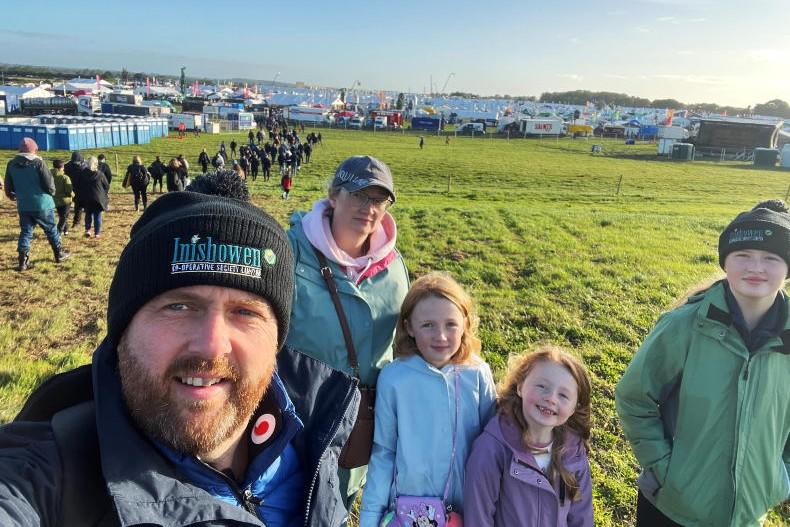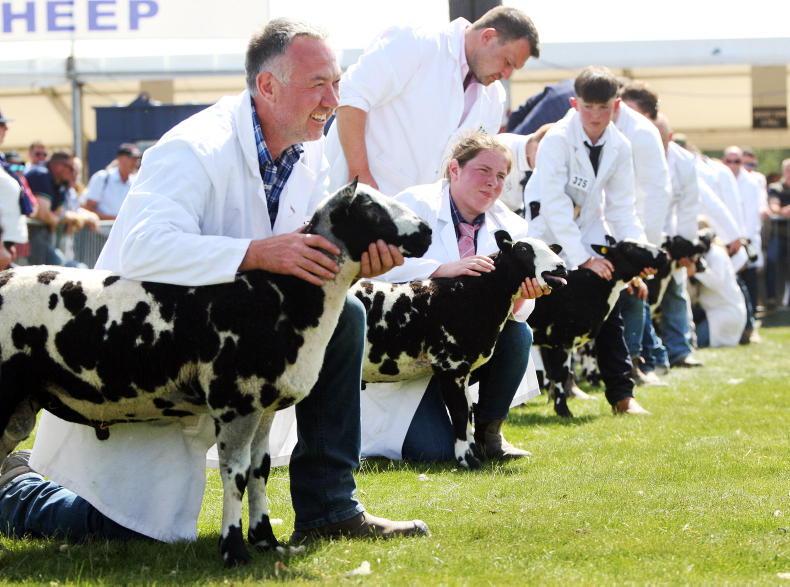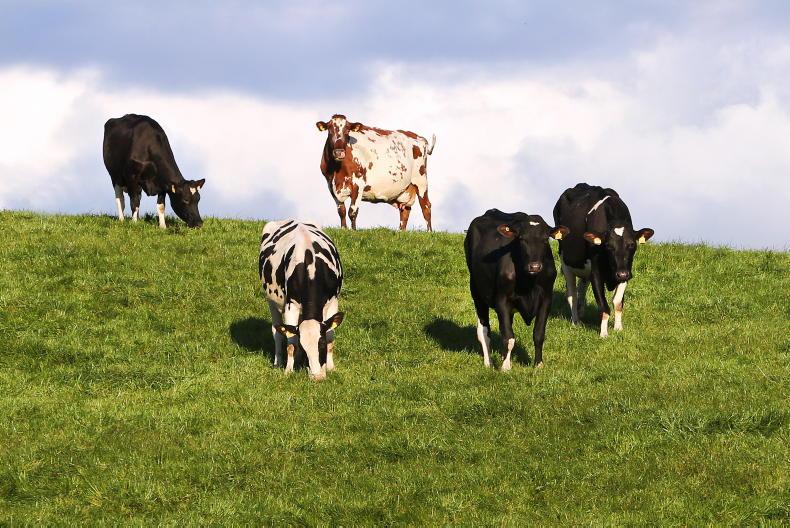Balmoral Show has an increasingly important role in educating consumers about local food production, as a growing proportion of its visitors have no farming background.
This is no straightforward task. It is a worldwide trend that as more people move to urban areas and fewer people work in agriculture, a yawning gap opens between town and country.
Social media users will see this when a debate starts on the ethics of livestock farming or the environmental impact of modern agriculture. These discussions tend to become extremely polarised, with very few participants occupying the middle ground.
In her new book Divide, journalist Anna Jones explores the “relationship crisis between town and country” by drawing on both her own life experiences and a series of interviews.
Although brought up on a small farm on the English-Welsh border, Jones has lived most of her adult life in cities. More recently, she has moved closer to home and is well qualified to look at the urban-rural divide from both angles.
It is a worldwide trend that as more people move to urban areas and fewer people work in agriculture, a yawning gap opens between town and country
Many of the interviews in the book were conducted as part of Jones’s work as a rural affairs journalist with the BBC, or as part of her Nuffield Farming Scholarship.
There are several international angles, from the US to Eastern Europe to Australia, which show the disconnect between urban and rural dwellers is not just confined to the UK.
For example, Brandon Pickard, a large-scale arable grower from Iowa, raises a point that will resonate with farmers the world over. He tells Jones that although consumers depend on farmers to produce the food they need to survive, food is taken for granted and farmers are not appreciated.
“No one even really knows or cares that we’re out here. We’re nothing and yet, we’re everything.”
The real thorny issues in the rural-urban disconnect are not dealt with until later on in the book, but it is worth the wait.
Jones points out that it is in the interests of anti-livestock farming campaigners for consumers to have a lack of understanding about modern agriculture. This allows them to use images of animal cruelty from a small number of cases to portray the entire industry in a bad light.
She raises concerns that the continued drive for improved productivity and efficiency on farms is not good for animal welfare or most environmental indicators
Those of us who live in rural areas and work in agriculture know that the claims made by these groups are exaggerations, but most people in large cities are oblivious.
“Animal rights groups depend on this disconnection – their narrative is weakened without it,” Jones writes.
However, she stays firmly in the middle ground throughout the book and is equally critical of some aspects of modern farming.
For example, she raises concerns that the continued drive for improved productivity and efficiency on farms is not good for animal welfare or most environmental indicators.
She also questions the likes of intensive indoor pig and poultry systems, and the sustainability of feeding ruminant livestock grains which humans can eat directly.
However, missing from her analysis is the economics of food production and the seemingly never-ending drive for cheap food.

Divide is published by Kyle Books.
Agroecology
Jones conducts several interviews with advocates of ‘regenerative agriculture’ or ‘agroecology’.
These types of interviews by mainstream journalists can often come across as patronising to conventional farmers. However, Jones does a good job at keeping expectations grounded. She talks to Herdfordshire farmer Stephen Walker who has applied many regenerative principles to his business with mixed results.
Walker argues that many proponents of agroecology aren’t farmers themselves.
“It’s very easy to talk about these things, but actually doing it is very tough. You’ve got all the financial burden, all the work, all the stress,” he said.
Rural-urban divide cuts two ways
Anna Jones’s new book is about rural dwellers not understanding their urban counterparts, as well as city people not understanding country life.
For example, Jones points out that many farmers think people in towns have easy lives with nine to five jobs and weekends off, but she argues there is a lesson in there for the agriculture industry.
Even though it is impossible for most farmers to work set hours, many can and should make more of an effort to take time off and get away from their farm when it suits.
“Living and thinking like a workhorse and martyring yourself to ‘a way of life’ is flawed and flies in the face of all the best advice around achieving work/life balance and protecting mental health,” Jones writes.
The book does drag in places and some of the topics discussed, such as politics, are heavily focused on England, and are not that relevant to other parts of the UK or Ireland.
Living and thinking like a workhorse and martyring yourself to ‘a way of life’ is flawed and flies in the face of all the best advice
However, some interesting points are raised throughout the book, which gives the reader, whether they be an urban or rural dweller, a different perspective on how the other half live.
We should all probably be a bit more like Jones and take a look from the middle ground when forming a view on topic that typically divides along urban and rural lines.
A good illustration of this approach comes from Jones’s view on the interplay between agriculture and the environment. Her opinion comes across as balanced and rational.
“Hardline environmentalists are never going to achieve their rewilded utopia, untouched by the hand of human industry, in a modern world with a growing population and billions of mouths to feed,” she writes.
But Jones adds that “hardline farmers” are never going to retain “isolated islands of intensive agriculture” which are unaffected by environmentalism. “Consumers want more than just calories from the farm landscape,” she says.
Balmoral Show has an increasingly important role in educating consumers about local food production, as a growing proportion of its visitors have no farming background.
This is no straightforward task. It is a worldwide trend that as more people move to urban areas and fewer people work in agriculture, a yawning gap opens between town and country.
Social media users will see this when a debate starts on the ethics of livestock farming or the environmental impact of modern agriculture. These discussions tend to become extremely polarised, with very few participants occupying the middle ground.
In her new book Divide, journalist Anna Jones explores the “relationship crisis between town and country” by drawing on both her own life experiences and a series of interviews.
Although brought up on a small farm on the English-Welsh border, Jones has lived most of her adult life in cities. More recently, she has moved closer to home and is well qualified to look at the urban-rural divide from both angles.
It is a worldwide trend that as more people move to urban areas and fewer people work in agriculture, a yawning gap opens between town and country
Many of the interviews in the book were conducted as part of Jones’s work as a rural affairs journalist with the BBC, or as part of her Nuffield Farming Scholarship.
There are several international angles, from the US to Eastern Europe to Australia, which show the disconnect between urban and rural dwellers is not just confined to the UK.
For example, Brandon Pickard, a large-scale arable grower from Iowa, raises a point that will resonate with farmers the world over. He tells Jones that although consumers depend on farmers to produce the food they need to survive, food is taken for granted and farmers are not appreciated.
“No one even really knows or cares that we’re out here. We’re nothing and yet, we’re everything.”
The real thorny issues in the rural-urban disconnect are not dealt with until later on in the book, but it is worth the wait.
Jones points out that it is in the interests of anti-livestock farming campaigners for consumers to have a lack of understanding about modern agriculture. This allows them to use images of animal cruelty from a small number of cases to portray the entire industry in a bad light.
She raises concerns that the continued drive for improved productivity and efficiency on farms is not good for animal welfare or most environmental indicators
Those of us who live in rural areas and work in agriculture know that the claims made by these groups are exaggerations, but most people in large cities are oblivious.
“Animal rights groups depend on this disconnection – their narrative is weakened without it,” Jones writes.
However, she stays firmly in the middle ground throughout the book and is equally critical of some aspects of modern farming.
For example, she raises concerns that the continued drive for improved productivity and efficiency on farms is not good for animal welfare or most environmental indicators.
She also questions the likes of intensive indoor pig and poultry systems, and the sustainability of feeding ruminant livestock grains which humans can eat directly.
However, missing from her analysis is the economics of food production and the seemingly never-ending drive for cheap food.

Divide is published by Kyle Books.
Agroecology
Jones conducts several interviews with advocates of ‘regenerative agriculture’ or ‘agroecology’.
These types of interviews by mainstream journalists can often come across as patronising to conventional farmers. However, Jones does a good job at keeping expectations grounded. She talks to Herdfordshire farmer Stephen Walker who has applied many regenerative principles to his business with mixed results.
Walker argues that many proponents of agroecology aren’t farmers themselves.
“It’s very easy to talk about these things, but actually doing it is very tough. You’ve got all the financial burden, all the work, all the stress,” he said.
Rural-urban divide cuts two ways
Anna Jones’s new book is about rural dwellers not understanding their urban counterparts, as well as city people not understanding country life.
For example, Jones points out that many farmers think people in towns have easy lives with nine to five jobs and weekends off, but she argues there is a lesson in there for the agriculture industry.
Even though it is impossible for most farmers to work set hours, many can and should make more of an effort to take time off and get away from their farm when it suits.
“Living and thinking like a workhorse and martyring yourself to ‘a way of life’ is flawed and flies in the face of all the best advice around achieving work/life balance and protecting mental health,” Jones writes.
The book does drag in places and some of the topics discussed, such as politics, are heavily focused on England, and are not that relevant to other parts of the UK or Ireland.
Living and thinking like a workhorse and martyring yourself to ‘a way of life’ is flawed and flies in the face of all the best advice
However, some interesting points are raised throughout the book, which gives the reader, whether they be an urban or rural dweller, a different perspective on how the other half live.
We should all probably be a bit more like Jones and take a look from the middle ground when forming a view on topic that typically divides along urban and rural lines.
A good illustration of this approach comes from Jones’s view on the interplay between agriculture and the environment. Her opinion comes across as balanced and rational.
“Hardline environmentalists are never going to achieve their rewilded utopia, untouched by the hand of human industry, in a modern world with a growing population and billions of mouths to feed,” she writes.
But Jones adds that “hardline farmers” are never going to retain “isolated islands of intensive agriculture” which are unaffected by environmentalism. “Consumers want more than just calories from the farm landscape,” she says.











SHARING OPTIONS